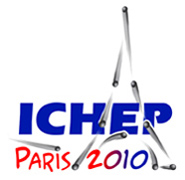Speaker
Prof.
Kyungseon Joo
(University of Connecticut)
Description
We will discuss the program to study the electromagnetic N* transition form factors with the CLAS12 detector and the energy upgraded 12 GeV CEBAF beam at Jefferson Lab. We plan to measure exclusive single-meson and double-pion electroproduction cross sections off a proton target to study almost all well established N*'s at still unexplored area of highest photon virtualities ever achieved in the resonance studies from 5.0 to 10 GeV2 . Exclusive final states will be measured including the identification of pi0 and eta mesons by measuring the two decay photons as well as of charged multi-pions. From the proposed measurements, we expect to obtain the electromagnetic transition form factors (electro-couplings) for well established excited nucleon states at the distance scales, which correspond to the leading contribution from quark degrees of freedom. Expected data on electrocouplings of excited nucleon states with various quantum numbers will allow us to explore how the non-perturbative strong interactions between dressed quarks create nucleon resonances and how they emerge from QCD. For the first time we will be able to study generation of dressed quark dynamical mass that account for more than 97 % of hadron mass and to extend our knowledge on behavior of running strong coupling in transition regime from confinement to pQCD. The close collaboration between experimentalists and theorists will allow us to provide high-precision data, high-quality analyses, as well as state of the art model and QCD based calculations. In this talk, we also review the current N* program with CLAS at Jefferson Lab as well.
Author
Prof.
Kyungseon Joo
(University of Connecticut)
